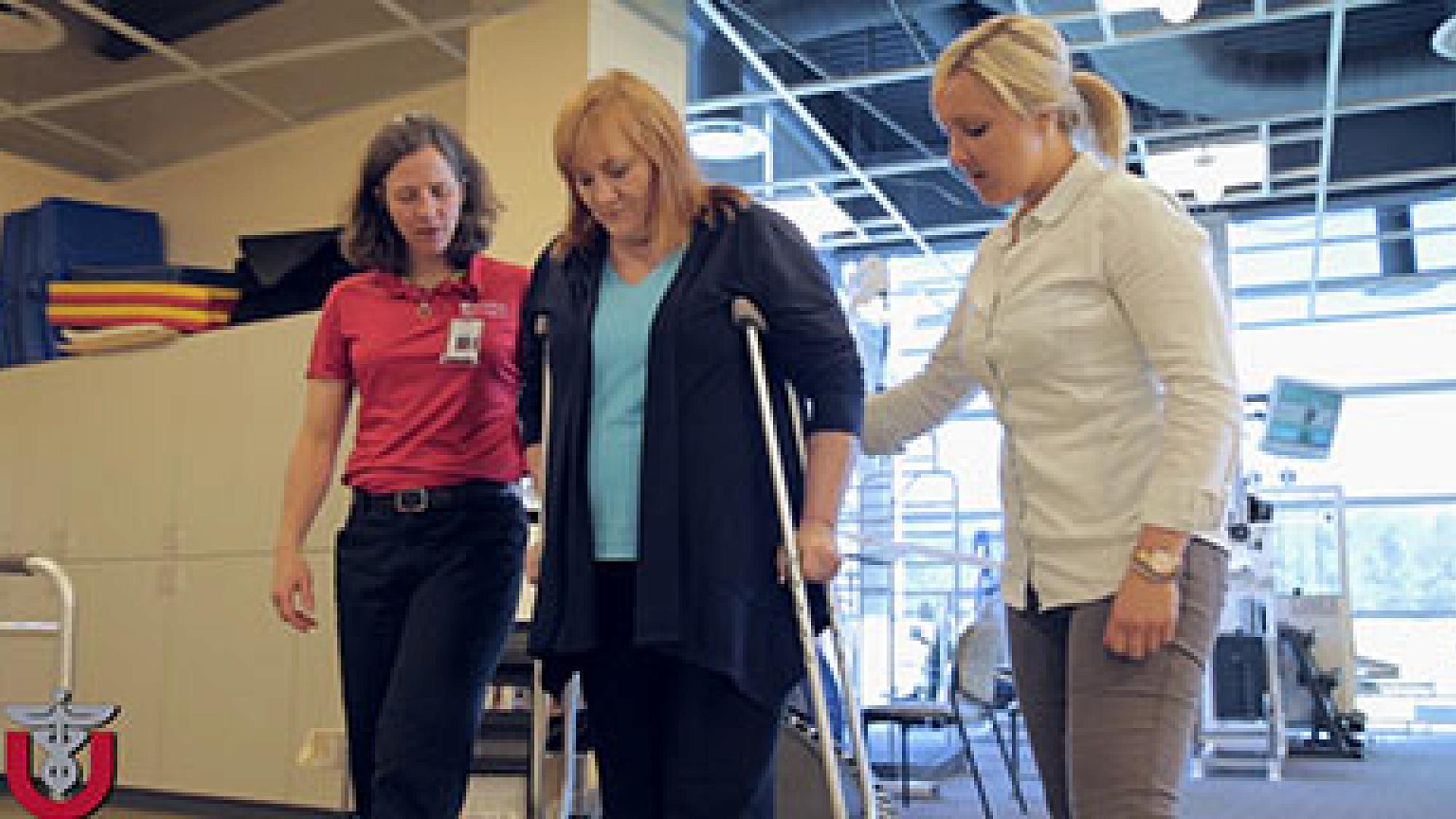Benefits of Knee Replacement Surgery
During a knee replacement, we replace your damaged knee joint with an artificial joint made of metal and plastic. There are two different kinds of knee replacements: total knee replacement and partial knee replacement (uni-compartmental knee arthroplasty). Knee replacement surgery offers a solution for patients that suffer from knee pain.
You may want to consider a knee replacement if medications, therapy, and other noninvasive treatments no longer relieve your knee pain. Knee replacements come with a range of benefits:
-
Decrease your knee pain
-
Increase your function and mobility
-
Improve your overall quality of life
A new knee joint can make it easier to participate in the activities you enjoy. It can also allow you to exercise more regularly, which reduces your risk of coronary artery disease, type 2 diabetes, and obesity.
Why Choose University of Utah Health?
Our orthopedic hip and knee specialists are the most experienced in the Mountain West. Our specialized team of experts are the best in the region for treating patients with complex knee conditions.
We approach your care collaboratively, using state-of-the-art, evidence-based treatment methods. We are a regional referral center for orthopedic treatments, meaning specialists around the country send patients to us and trust our expert care.

Virtual Rehab Visits
Find a Knee Replacement Provider
How Bad Does a Knee Have to Be Before Replacement?
You can often control mild to moderate knee pain with noninvasive treatments. But you may find other reasons for knee replacement surgery. Your doctor may recommend surgery if you have the following conditions:
-
Arthritis, in which cartilage (spongy cushioning) around the knee joint wears away
-
Inflammation that doesn’t improve with medication
-
Severe knee deformities such as a bowing outward or inward
-
Limited mobility due to pain or stiffness
-
Severe pain, even while resting
Recovery Time for Knee Replacement
You will be able to walk immediately after surgery. Most people take prescription pain medications for around 5–14 days after surgery. You usually can manage pain with over-the-counter pain relievers like Tylenol (acetaminophen) after 14 days.
Most people can resume their usual activities six weeks after a knee replacement. Full recovery takes up to a year. Improvements in pain and function take time, but you will notice slow and steady improvements each month.
How Long Do Knee Replacements Last?
Total joint replacements typically last several decades, depending on your activity levels and overall health. You may need another surgery eventually, depending on your age and how much wear and tear you put on your joint.
Does Medicare Cover a Knee Replacement?
Medicare will typically help cover the costs of a knee replacement when your doctor deems it medically necessary. Talk with our care team if you have any concerns about the costs of a knee replacement. We will help you understand your payment options and may help connect you with financial resources.
Schedule an Appointment
Call 801-587-7109 to request an appointment with our orthopedic specialists. Referring providers may complete our patient referral form or call 1-866-850-8863.
Patient Resources
Joint Academy: Preparing for Knee Replacement Surgery
Joint Academy is an extensive pre-surgery education program for joint replacement patients and their friends, family, and care coaches.
Patient Guide: Recovery From Knee Replacement
Knee replacement can seem like a daunting process, but we will walk you through the entire way from before surgery checklists to recovery and life after surgery.







